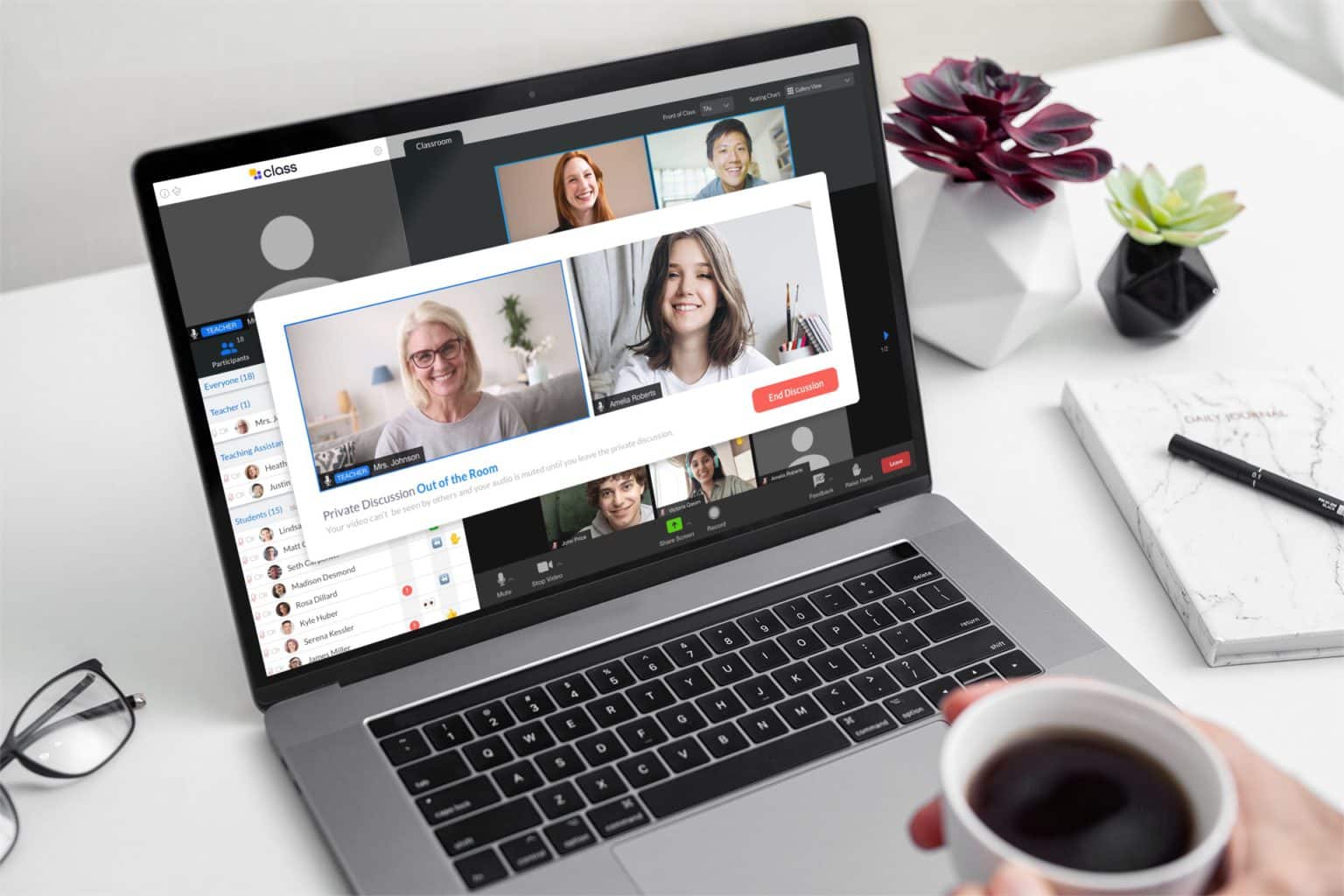
Class is the next generation virtual classroom for K-12, higher education, government agencies, and the workplace. Contact us today to schedule your live demo and see Class in action.

Class is the next generation virtual classroom for K-12, higher education, government agencies, and the workplace. Contact us today to schedule your live demo and see Class in action.

Virtual academies are taking hold in education and are likely to continue even after the pandemic has subsided. What started as a baptism by storm for teachers who suddenly found themselves teaching remotely, many with no prior experience, has now proven to be rich and fertile ground for developing a wide range of Zoom best practices for teachers. These capabilities are likely to serve new teachers well now and into the future.
As teachers and students have learned to navigate the online learning environment, virtual academies have taken hold. Virtual academies have actually been around for quite some time, and have been used to help students continue their education when involved with conflicting activities—sports, acting, etc. The virtual academy is a concept initially driven by Florida Virtual School back in 1997.
However, the virtual learning concept has been fueled by the pandemic, with schools around the country adopting a virtual academy approach. Fortunately, tools like Zoom can help teachers effectively engage and connect with students in a virtual environment. It is not something that is entirely intuitive, though.
As the New Straits Times points out: “When Covid-19 invaded our lives, teachers were given little notice — and little training — to shift to distance learning or e-learning. Almost overnight, the pandemic forced a sweeping switch to remote teaching and learning that many thought would only be temporary.”
It has been anything but. As they have gained experience, teachers are increasingly sharing Zoom best practices for teachers as well as parents as they navigate the virtual school environment.

“At the start of the pandemic, educators moved from one educational and mode of instruction — in-person learning — to five,” says Sean Casey, manager of strategic partnerships at The Ed-Fi Alliance in Austin, Texas. These included: “remote, in-person, and hybrid learning, as well as synchronous and asynchronous sessions,” he says. Adapting to that shift, he says, “meant adapting more software, more tools, and more variety in how we teach and learn.” It was an “overnight shift,” which “surfaced difficult questions.”
Earlier this year—from March 12 to April 18—EdNC gathered input from educators, parents, and students through a survey that sought input on their virtual teaching and learning experiences during the pandemic. Their perspectives were, by and large, quite positive—perhaps surprisingly so.
In fact, 75% gave the school year a score of 5 or higher on a 10-point scale when asked about their own personal experiences with virtual learning. When asked to reflect on the experiences of others—parents, students, and educators— they were more likely to indicate a score of 5 or lower.
One of the biggest impacts on having a positive experience was technology. As EdNC reports: “Educators said one silver lining of the pandemic was the fact that it forced schools and districts to upgrade technology, and it forced teachers to learn how to use it.” They have learned a lot along the way. Their best practice insights can be invaluable to others as schools continue to operate in some form of hybrid learning, a new normal that may last for some time.
For teachers to excel in a virtual academy environment, it is important to know and understand the wide range of tools available to them. Chief among these is the virtual whiteboard, says Eric Kim, co-owner and program director of LA Tutors, an international private tutoring company. That, “combined with the ability to screen share digital documents and pictures and annotate on-screen,” he says, “makes Zoom just as, if not more, effective than the traditional whiteboard.”
It is important to practice with these Zoom classroom tools, of course. Even writing when using a mouse, says Kim, is a skill that must be practiced. “This can be more difficult than you think,” he says. For those who struggle he suggests investing in a writing table or iPad that will allow screen sharing and writing with a finger or Apple pencil.
Kim also sees big benefits in Zoom’s web conferencing recording functions. “Students who may not understand you during lecture and don’t feel comfortable interrupting the class can now record the session and rewatch it again later at night,” he says. “Just make sure you’ve given permission to record.”
William Cannon is the founder of Uplead, a B2B data-mining company. He offers three Zoom best practices for teachers.
Leigh Smith with Brooklyn Robot Foundry, an organization that offers STEAM classes for both children and adults, notes that it is important to communicate with families as well as students. “Let the families know what is expected of them, during class and afterward,” says Smith. In addition, Smith suggests taking advantage of opportunities to engage students “beyond the screen.” For instance: “We’ve found allowing kids to share their personal items, their room, their new favorite song, or most popularly, their pets, really allows them to open up and give others a chance to get to know them.”
Zoom virtual classrooms are likely here to stay, at least in some capacity, even as children and teachers make their way back to physical classroom settings. The pandemic has provided an opportunity for teachers at all levels to learn and share Zoom best practices for teachers that will serve them now and well into the future.

Class is the next generation virtual classroom for K-12, higher education, government agencies, and the workplace. Contact us today to schedule your live demo and see Class in action.

Class is the next generation virtual classroom for K-12, higher education, government agencies, and the workplace. Contact us today to schedule your live demo and see Class in action.
Get our insights, tips, and best practices delivered to your inbox

Sign up for a product demo today to learn how Class’s virtual classroom powers digital transformation at your organization.

Features
Products
Integrations